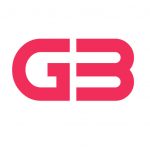Digital
The Beginner’s Guide to Logo Design
A logo is one of the most important elements of a brand’s identity. It appears on all your branding materials and products and helps customers…
A logo is one of the most important elements of a brand’s identity. It appears on all your branding materials and products and helps customers instantly recognize your company. For beginners looking to design their first logo, however, the process can seem daunting. This guide will walk you through the key steps to designing an effective logo as a beginner.
Define Your Brand
Before starting the logo design process, you need to have a clear understanding of your brand. Take the time to define your company’s mission, values, personality and offerings. Think about the impression you want to make on customers and what makes your business unique. This will give you direction for your logo. For example, a brand with a personality that is fun and playful may opt for a more whimsical or optical illusion art logo style.
Research Competitors and Industry
Conduct research on logos of competitors and others in your industry. This will help you identify what styles and themes are oversaturated in your field as well as any opportunities to stand out. For example, if most logos in your industry use conservative colours and fonts, you may decide to go for a more vibrant and modern aesthetic. Avoid copying or coming too close to existing logos. You want your logo to be recognisable and reflective of your own brand.
Choose Colours and Fonts Carefully
Colours and fonts are two of the most important design elements to consider for your logo. Colours evoke powerful emotions and associations. Make sure your colour palette aligns with your brand personality. Fonts also make a strong impression, with serif and sans serif fonts conveying very different tones. Script or display fonts can come across as elegant or friendly, depending on the context. Choose one or two fonts and be consistent across your branding.
Consider Audience and Context
Knowing who your target audience is will inform your logo design choices. Consider demographics like age, gender, and location. A logo for a startup targeting millennials may look very different from a logo for a law firm catering to older professionals. Also, think about where the logo will be seen – on your website, packaging, advertisements, etc. Optimal sizing and visual impact will vary.
Start Sketching Initial Ideas
Once you’ve gathered inspiration and information about your brand, competitors, and audience, start brainstorming and sketching logo ideas. Don’t judge your ideas too quickly. Sketch freely and come up with a range of concepts exploring different symbols, shapes, styles, and compositions. Refine down to your strongest ideas. Avoid clichés and generic concepts – think creatively to capture the essence of your brand in a unique way.
Choose Logo Elements Thoughtfully
From imagery to fonts to colour, every element of your logo has significance. While simplicity is key, thoughtfully chosen elements can give deeper meaning. Consider incorporating visuals or icons that represent your industry or offerings. Or use letters in your business name creatively as part of the logo. Some brands use optical illusion art cleverly to embed hidden symbols or messages. Each element should reinforce your brand identity, not detract from it.
Know the Logo Design Styles
There are a variety of logo design styles to explore as a beginner:
- Lettermarks: Logos displaying your brand’s initials or first few letters. Clean and straightforward.
- Wordmarks: Logos using your full brand name in a unique font treatment.
- Pictorial marks: Logos using an illustrative image or icon.
- Abstract marks: Logos with abstract geometric shapes and symbols.
- Mascot logos: Logos with an illustrated mascot or character. Playful and friendly.
- Combination marks: Logos combining imagery with your brand name.
Experiment with different styles as you conceptualise your logo. Consider which option best represents your brand personality.
Refine and Finalise Your Design
Once you’ve explored your options, refine your logo concept with input from others. Ensure it looks visually appealing in both colour and black and white. The final logo file should use vector rather than raster graphics for scalability. Pay close attention to spacing and proportions. Polish your design by tweaking hues, aligning elements, and perfecting sizing and composition. Your logo should look professional and communicate your brand clearly.
Designing an effective logo takes research, creativity and refinement of concepts. Keep your target audience and brand identity at the heart of the process. Patience and persistence will pay off as you see your logo come to life. With a thoughtful approach and commitment to crafting a unique design, beginners can develop a logo they are proud of.
